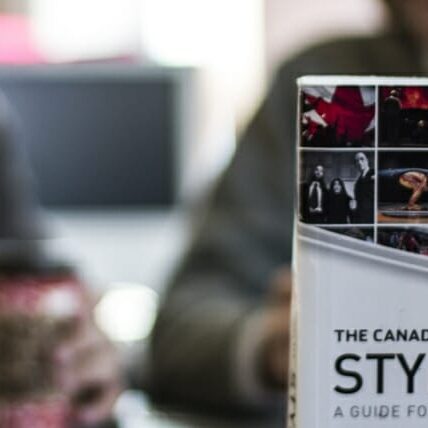

Journalists must understand the importance of asking subjects for their preferred gender pronoun. (Photo by Bryn Karcha)
I hate asking my interview subjects for their names. I’m terrified of spelling an interviewee’s name wrong, so I force myself to ask for the spelling. I hyperventilate even if the subject’s name is an apparently simple Sarah Smith, because she might spell “Sarah” without an “h” at the end, or spell it a way I’ve never seen before. The misspelling of a name is one of the most embarrassing and discreditable practices in journalism.
I always ask for clarification with subjects’ names, but with gender I don’t bother. He’s a boy or she’s a girl—it looks so straightforward, why would I even ask? If I asked a question like, “What’s your preferred pronoun?” I could end up offending a woman who may think I couldn’t tell whether she was a man or a woman.
However, this question of preferred pronoun needs to start being asked—even if there is a risk of possibly offending someone. It’s better for a journalist to ask rather than wrongly assume someone’s pronoun preference. Assuming a pronoun is just as bad as assuming the spelling of a name: it can falsely portray the subject.
With ongoing transgender and transsexual issues to be dealt with, it’s important to get these pronouns right. Though not everyone accepts that gender is not synonymous with sex, nor that “man” and “woman” are the only genders, trans communities are growing and are often portrayed in the media. Journalists must start learning that “they” can be a singular neutral pronoun, or that people who look like men might identify as women, or vice versa.
But it’s easier to agree upon the need to ask subjects for their preferred pronouns than to do it. When I wrote an article for the University of King’s College’s The Watch, I interviewed the Dalhousie libraries’ communications coordinator Marlo MacKay over email. Marlo identifies as woman, but I assumed she was a man due to her first name. Luckily, she corrected my “he” for a “she” before I wrote the article. Had she not corrected me, I could have deeply embarrassed and/or hurt her for mistaking her gender, and thus her identity.
In a King’s journalism course, instructor Lezlie Lowe makes a point of telling students to ask subjects about their preferred pronouns in a class on language and sensitivity. That’s the first step, and I think adding an explanation to the question of why a journalist needs to know the subject’s preferred pronoun for identification accuracy could decrease awkward moments or seemingly rude comments on appearance.
Following an incidence of mis-gendering in an article earlier this year, the Gazette will be adding gender language criteria to its house style guide because of this growing need for journalists to understand how to respectfully handle transgender and transsexual issues.
If a journalist hasn’t had personal experience wrongly identifying a subject’s gender, or hasn’t been told to ask an interviewee for her preferred pronoun, a journalist would probably—as most people would—assume the subject’s gender from their name or appearance.
The Canadian Press Stylebook mentions that transgender and transsexual people should be referred to by “a term the person in questions uses…and a pronoun consistent with how they live.” Though this explanation encourages the reporter to ensure that transgender and transsexual people have terms and pronouns that represent them, this guideline assumes that the reporter knows the interviewee is transgender or transsexual.
What the Stylebook forgets is that a journalist doesn’t always know, and thus must ask everyone for the terms and pronouns they prefer, even if it seems obvious.






